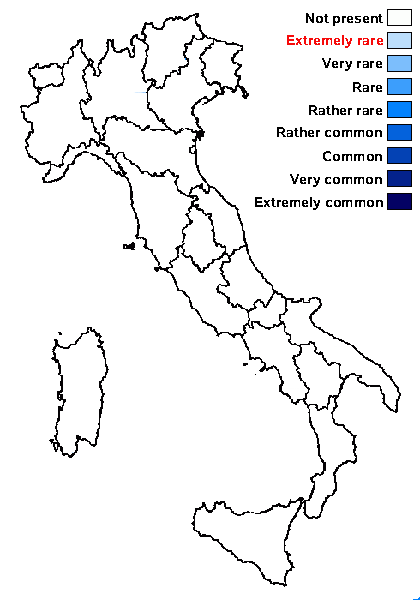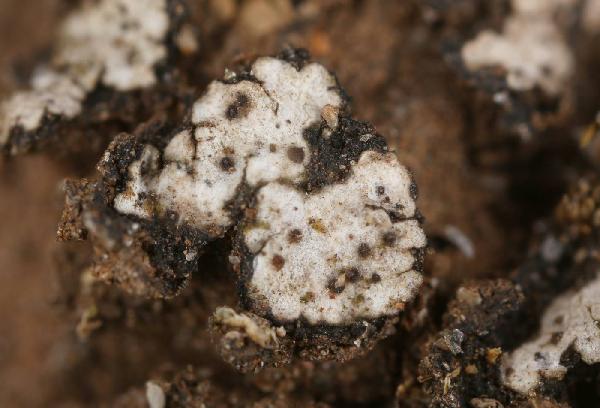Placidiopsis oreades Breuss
Öst. Z. Pilzk., 5: 87, 1996
Synonyms:
Distribution:
Description: Thallus squamulose, the squamules crenulate-lobulate, 1.5-3.5 mm broad, 0.2-0.4 mm thick, flattened to weakly convex, scattered to contiguous, usually not overlapping, adpressed to the substratum, pale brown to grey-brown, matt; lower surface brown, attached by a mat of c. 4 μm thick, colourless rhizohyphae. Upper cortex paraplectenchymatous, 25-50 μm thick, consisting of 7-12 μm wide cells, sometimes covered with a thin epinecral layer; algal layer 60-90 μm thick, poorly delimited from the medulla; lower cortex brown, (sub-)paraplectenchymatous. Perithecia frequent, laminal, immersed, pyriform, up to 0.3 mm across, without involucrellum. Exciple initially colourless, then dark brown, of tangentially arranged, elongate cells; periphyses present around the ostiole, measuring 20-30 x 2.5-3 μm, the terminal cells somewhat enlarged; interascal filaments absent; hymenial gel hemiamyloid. Asci 8-spored, narrowly clavate, thin-walled, apically slightly thickened, with a small ocular chamber, K/I-, 60-75 x 14-18 μm. Ascospores 1-septate, not constricted at septum, hyaline, broadly ellipsoid, thin-walled, (14-)15-20 x (6.5-)7-9 μm. Photobiont chlorococcoid (Diplosphaera). Spot tests: cortex and medulla K-, C-, KC-, P-, UV-. Chemistry: without lichen substances. Note: on marly soil and in crevices near and above treeline, with scattered records from the mountains of Central Europe and Inner Asia, a few or which are from the Alps outside Italian territory; to be looked for in the Italian Alps.
Growth form: Squamulose
Substrata: soil, terricolous mosses, and plant debris
Photobiont: green algae other than Trentepohlia
Reproductive strategy: mainly sexual

Predictive model
Growth form: Squamulose
Substrata: soil, terricolous mosses, and plant debris
Photobiont: green algae other than Trentepohlia
Reproductive strategy: mainly sexual

Predictive model
 INDEX FUNGORUM
INDEX FUNGORUM
 GBIF
GBIF


